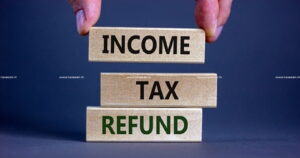 Every taxpayer should make an effort to mitigate their tax liability by claiming all the available deductions and exemptions at the time of furnishing their tax returns. However, such deduction/ exemption amount should be correctly computed after considering the tax regime, residential status etc.
Every taxpayer should make an effort to mitigate their tax liability by claiming all the available deductions and exemptions at the time of furnishing their tax returns. However, such deduction/ exemption amount should be correctly computed after considering the tax regime, residential status etc.
Income tax return filing FY 2023-24: The deadline to file ITR for AY 2024-25 is July 31, 2024. Salaried individuals are waiting for their employers to issue Form 16, in a week or two. Once they receive Form 16, they will be in a position to file income tax returns easily. However, this document is not necessary to file an ITR if a taxpayer uses other documents like Form 26AS, Annual Information Statement (AIS) / Tax Information Summary (TIS), capital gains details, bank statements, home loan statement and interest certificates from banks.
If you’re preparing to file your ITR and believe you’re genuinely entitled to a tax refund based on the taxes you’ve already paid, here are five effective strategies to maximize your income tax refunds.
Suresh Surana, Founder, RSM India, explains 5 tried and true ways to maximize tax refunds by taxpayers under the old tax regime.
Section 237 of IT Act allows a taxpayer person to claim refund of the income tax paid in case the amount of tax paid by him/her exceeds the actual tax liability. In order to optimize tax refunds, the taxpayers may ensure the following:
Every taxpayer should make an effort to mitigate their tax liability by claiming all the available deductions and exemptions at the time of furnishing their tax returns. However, such deduction/ exemption amount should be correctly computed after considering the tax regime, residential status etc.
One of the main reasons for issuance of refunds is excess tax paid on account of TDS and TCS. Thus, any discrepancy in the amounts of TDS and TCS as per the revenue authorities records and the taxpayer’s records may result in lower refunds to the taxpayer. Therefore, taxpayer discovering any discrepancies between Form 26AS and AIS should, in case of error in AIS, provide feedback on the portal in order to rectify the same and in case of error in form 26AS, the taxpayer should inform the deductor about the variation and request them to rectify the errors and omissions their side.
Check for any adjustment of refund for the year against any outstanding demand for any previous financial years:
The revenue authorities often adjust the refund for the current year against previous year’s outstanding demand. Thus, the taxpayer must keep track of any Intimations issued u/s 245 of the IT Act for intimation of any such refund adjustment.
Income tax return which is not verified within the stipulated time would be considered as invalid. Since e-verification is the most convenient and fast way to verify the tax returns, taxpayers should e-verify the tax returns within 30 days from the date of furnishing the return. Alternatively, the tax return can also be verified by sending the physical copy of ITR-V to CPC, Bangalore.
The taxpayer needs to prevalidate their bank accounts using their name, mobile number and PAN in order to receive Income Tax refund. Additionally, the taxpayers should ensure that the bank details (such as account no., IFSC Code, etc.) are correctly provided at the time of furnishing the tax return.
Source: https://www.financialexpress.com/money/income-tax-return-how-to-get-maximum-tax-refunds-on-filing-itr-check-out-these-5-ways-3510604/
© 2018 CA Chandan Agarwal. All rights reserved.